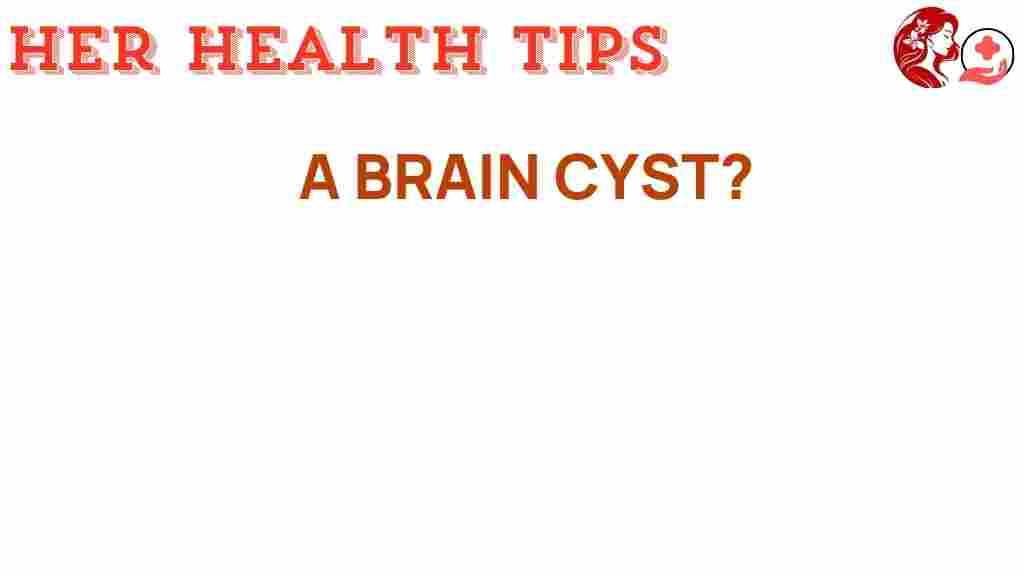Unveiling the Mysteries of Brain Cysts: What You Need to Know
Brain cysts are fluid-filled sacs located within the brain or on its surface. While they are often benign and asymptomatic, understanding their implications is crucial for maintaining neurological health. This article delves into the various aspects of brain cysts, including their symptoms, diagnosis, treatment options, risk factors, and prevention strategies. By raising awareness about brain cysts, we can empower individuals to seek timely medical advice and take proactive steps in their health management.
What is a Brain Cyst?
A brain cyst is a closed sac-like structure that can form in various locations within the brain. These cysts can vary significantly in size, shape, and the type of fluid they contain. The most common types of brain cysts include:
- Arachnoid Cysts: These are located between the brain’s surface and the arachnoid membrane, which is one of the protective layers surrounding the brain.
- Colloid Cysts: Usually found in the third ventricle of the brain, these cysts can obstruct the flow of cerebrospinal fluid (CSF), leading to increased intracranial pressure.
- Pineal Cysts: Located in the pineal gland, these cysts are often discovered incidentally during imaging studies.
Symptoms of Brain Cysts
Many brain cysts are asymptomatic and may require no treatment. However, if a cyst grows large enough or causes pressure on surrounding brain structures, symptoms can arise. Common symptoms include:
- Headaches
- Nausea and vomiting
- Seizures
- Vision or hearing problems
- Cognitive changes
- Difficulty with coordination or balance
If you experience any of these symptoms, it is essential to consult a healthcare professional for further evaluation. Early detection can lead to better outcomes.
Diagnosis of Brain Cysts
Diagnosing a brain cyst typically involves a combination of medical history, physical examinations, and imaging studies. The following tests are commonly used:
- Magnetic Resonance Imaging (MRI): This is the most effective imaging technique for visualizing brain cysts, providing detailed images of brain structures.
- Computed Tomography (CT) Scan: CT scans can also detect brain cysts, though they provide less detail than MRIs.
- Neurological Examination: A doctor will assess neurological function, including reflexes, strength, and coordination.
Once diagnosed, your healthcare provider will discuss the best course of action based on the cyst’s characteristics and any associated symptoms.
Treatment Options for Brain Cysts
The treatment of brain cysts depends on various factors, including their size, type, location, and whether they are symptomatic. Here are some common treatment approaches:
- Observation: If the cyst is small and asymptomatic, a “watch and wait” approach may be recommended, involving regular monitoring through imaging studies.
- Medications: Pain relievers or anti-seizure medications may be prescribed to manage symptoms associated with brain cysts.
- Surgery: If a cyst is causing significant symptoms or complications, surgical intervention may be necessary. Procedures can include cyst aspiration, endoscopic cyst removal, or traditional open surgery.
Discussing treatment options with a healthcare professional is crucial to determine the most appropriate approach based on individual circumstances.
Risk Factors Associated with Brain Cysts
While the exact cause of brain cysts is often unknown, several risk factors may contribute to their development:
- Genetics: A family history of brain cysts may increase your risk.
- Age: Certain types of brain cysts, such as colloid cysts, are more common in young adults.
- Infections: Some brain cysts may result from previous infections or inflammatory conditions.
- Trauma: Head injuries may also lead to the formation of cysts.
Understanding these risk factors can help in early detection and management of brain cysts.
Awareness and Prevention
Raising awareness about brain cysts is essential for early diagnosis and treatment. Here are some strategies to enhance awareness and potentially prevent complications:
- Regular Check-ups: Routine neurological examinations can help detect any abnormalities early.
- Education: Informing yourself and others about brain cysts can lead to better understanding and prompt action when symptoms arise.
- Healthy Lifestyle: Maintaining a well-balanced diet, regular exercise, and managing stress can support overall brain health.
For more information on brain health and related topics, you can visit this resource.
Troubleshooting Tips for Managing Symptoms
If you or a loved one has been diagnosed with a brain cyst, here are some tips to help manage symptoms effectively:
- Keep a Symptom Diary: Track any changes in symptoms, noting their frequency and intensity. This can help healthcare providers tailor treatment plans.
- Follow Medical Advice: Adhere to prescribed treatments and attend regular follow-up appointments.
- Seek Support: Joining support groups or talking to others who have experienced similar issues can provide emotional support and practical advice.
Conclusion
Understanding brain cysts is vital for anyone concerned about their neurological health. By being aware of the symptoms, diagnosis methods, treatment options, and risk factors associated with brain cysts, individuals can take proactive steps towards managing their health. Regular check-ups, education, and a healthy lifestyle are key components in preventing complications associated with brain cysts. If you suspect you have a brain cyst or are experiencing any related symptoms, do not hesitate to consult a healthcare professional for guidance.
In summary, awareness and education are crucial in navigating the complexities of brain cysts. By staying informed, individuals can make empowered decisions about their health and well-being.
This article is in the category Conditions and created by HerHealthTips Team
